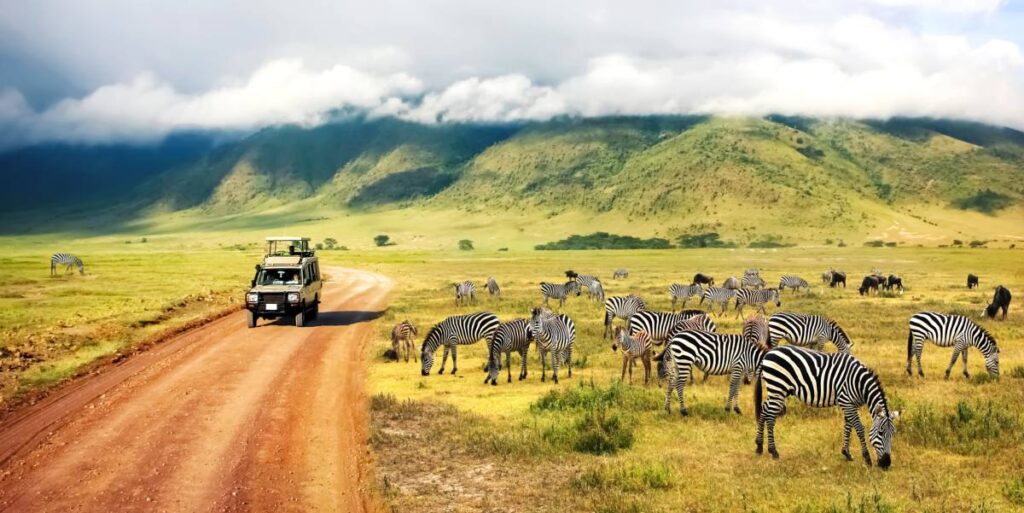Ngorongoro Crater, nestled within the expansive Ngorongoro Conservation Area in northern Tanzania, stands as a geological marvel, an ancient caldera formed millions of years ago by the collapse of a colossal volcano. This natural wonder has earned the moniker “The Eighth Wonder of the World” and is characterized by its circular depression, its floor situated at an elevation of approximately 1,800 meters (5,900 feet). Within this self-contained ecosystem, a diverse range of habitats, from lush forests to sprawling grasslands, sets the stage for a remarkable concentration of wildlife.
The crater is renowned as a Big Five territory, hosting a dense population of the iconic lion, elephant, buffalo, leopard, and rhinoceros. The abundance of flora and fauna within its boundaries contributes to the uniqueness of the ecosystem, making it a haven for nature enthusiasts and wildlife photographers. Recognized as a UNESCO World Heritage Site, the Ngorongoro Conservation Area, inclusive of the crater, underscores the delicate balance between wildlife and the Maasai people, who have coexisted harmoniously with the environment for generations. This conservation area not only preserves the rich biodiversity within the crater but also celebrates the cultural heritage of the indigenous Maasai pastoralists who inhabit its surroundings. Ngorongoro Crater, with its geological significance, ecological diversity, and cultural richness, beckons travelers to explore its breathtaking landscapes and witness the wonders of a truly extraordinary natural sanctuary.

